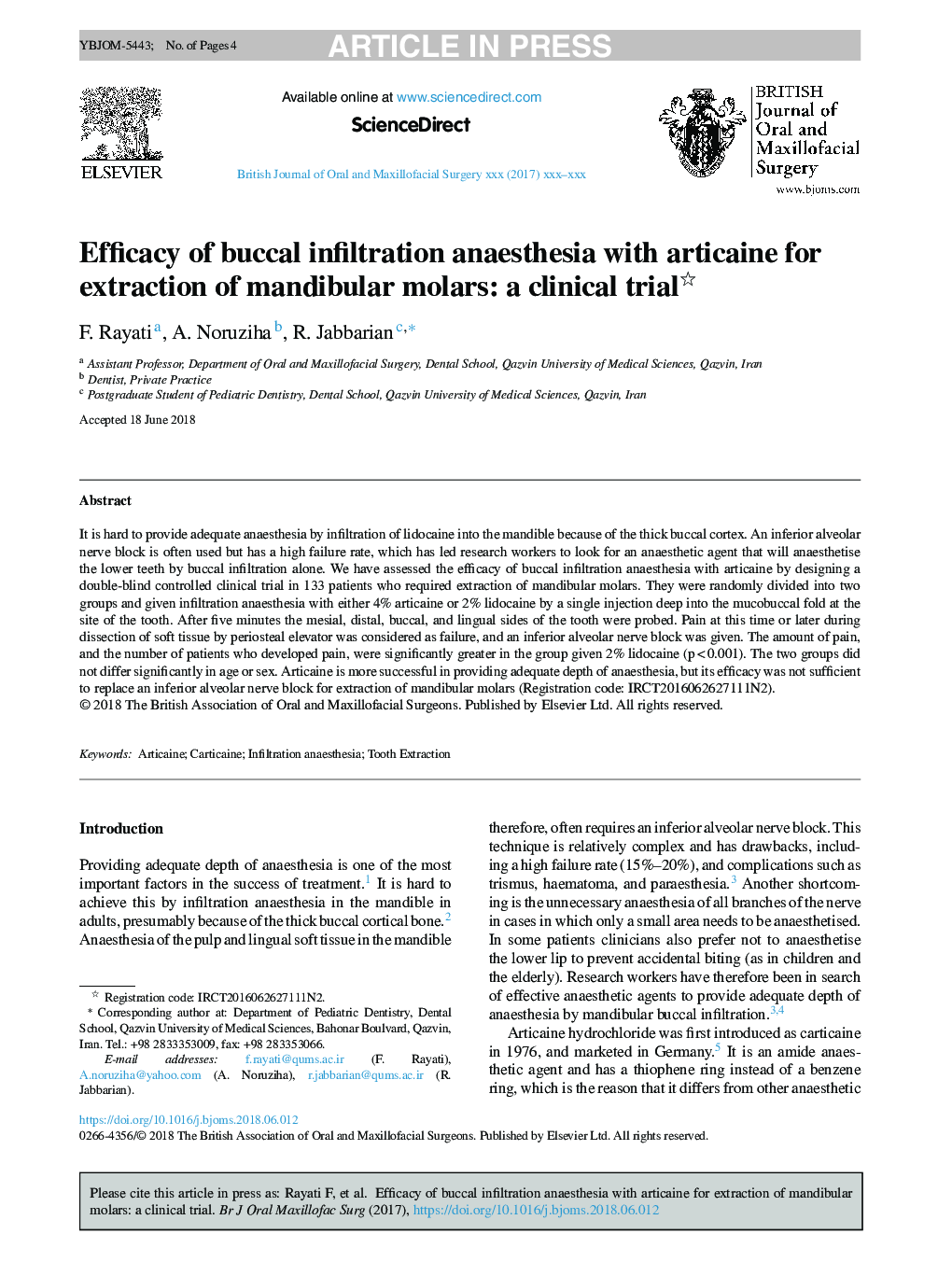| Article ID | Journal | Published Year | Pages | File Type |
|---|---|---|---|---|
| 8696670 | British Journal of Oral and Maxillofacial Surgery | 2018 | 4 Pages |
Abstract
It is hard to provide adequate anaesthesia by infiltration of lidocaine into the mandible because of the thick buccal cortex. An inferior alveolar nerve block is often used but has a high failure rate, which has led research workers to look for an anaesthetic agent that will anaesthetise the lower teeth by buccal infiltration alone. We have assessed the efficacy of buccal infiltration anaesthesia with articaine by designing a double-blind controlled clinical trial in 133 patients who required extraction of mandibular molars. They were randomly divided into two groups and given infiltration anaesthesia with either 4% articaine or 2% lidocaine by a single injection deep into the mucobuccal fold at the site of the tooth. After five minutes the mesial, distal, buccal, and lingual sides of the tooth were probed. Pain at this time or later during dissection of soft tissue by periosteal elevator was considered as failure, and an inferior alveolar nerve block was given. The amount of pain, and the number of patients who developed pain, were significantly greater in the group given 2% lidocaine (p < 0.001). The two groups did not differ significantly in age or sex. Articaine is more successful in providing adequate depth of anaesthesia, but its efficacy was not sufficient to replace an inferior alveolar nerve block for extraction of mandibular molars (Registration code: IRCT2016062627111N2).
Related Topics
Health Sciences
Medicine and Dentistry
Dentistry, Oral Surgery and Medicine
Authors
F. Rayati, A. Noruziha, R. Jabbarian,
